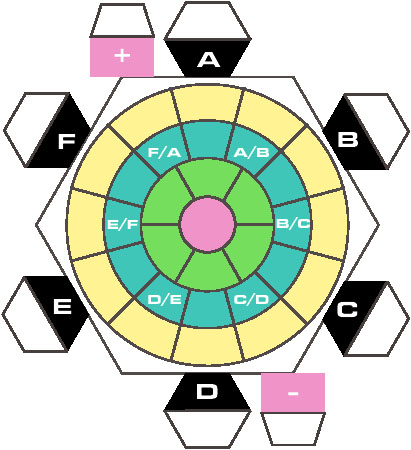Attack Vector (formerly Delta V)
designed by Ken Burnside
2002, Ad Astra Games
AVID concept is based on the PHAD created by Tony Valle




Vector movement for spacecraft combat games has been around since 1972, with the publication of Triplanetary. 3-D vector movement has been the holy grail. Many have attempted it (including your humble editor), but none have mananged to make a system which was actually playable. At least not short of computer assistance, which sort of defeats the purpose of a non-computer wargame.
Until now.
And as if that wasn't enough of a monumental breakthrough, Mr. Burnside also created a system which allows easy use of 3-D weapon facing and 3-D damage impact.
Please keep in mind that when I say "easy", I don't mean two-hours-to-play-one-turn-but-you-don't-actually-need-a-computer easy. I mean a-skilled-player-can-teach-you-in-five-minutes-flat easy.
Mr. Burnside acknowledges the work of Tony Valle, and the PHAD Mr. Valle created for his as yet unpublished air war game Birds of Prey. Mr. Valle graciously granted Mr. Burnside permission to use the concept. Mr. Burnside notes that "while he did a lot of work molding the PHAD into the AVID, the core brilliance is Tony's."
The system is centered around the AVID or Attitude/Vector Information Display, shown above.The hexagons are for recording your vector in various directions. A clever system ensures that only two hexes at most will contain numbers. The spherical grid in the center is the heart.
The sphere represents a globe, looking down from above. Both hemispheres are present, they just overlap. On this, symbols are drawn representing the current location of the ship's fore, aft, port, starboard, above and below. A simple but elegant system allows one to determine which grid square contains the image of one's opponent(s). By comparing that square with the location of your ship's symbols, and the pattern of one's weapon mounts, will determine which weapons will bear. Your opponent does this backwards to determine which aspect of their ship receives the incoming weapons fire. This is trivial, as the bearings are exactly reciprocal.
To truly see how easily this all works, get a copy of the game and try it out. Tell 'em Winch sent you.
Mr. Burnside has also created a brilliant set of "tilt blocks". Used in pairs, it allows the miniature to assume any 30 degree angle.

Mr. Burnside is also working with Mr. Eklund to adapt his delta V map to Attack Vector.
For the more technically inclinded, here is a paper explaining "Why do you track thrust, rather than simply assume that the displacement on the turn of thrust is equal to the change in velocity, like VMS and Full Thrust?"